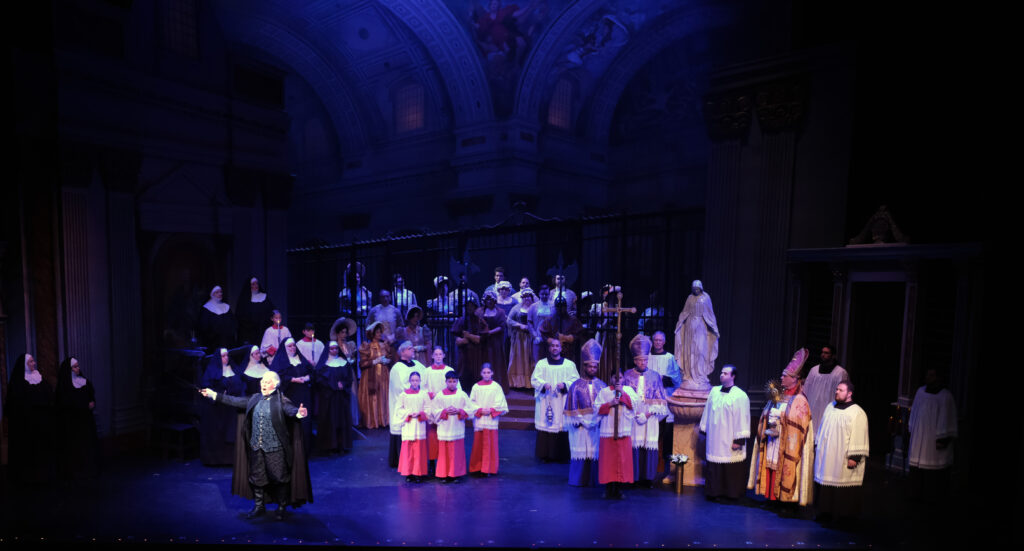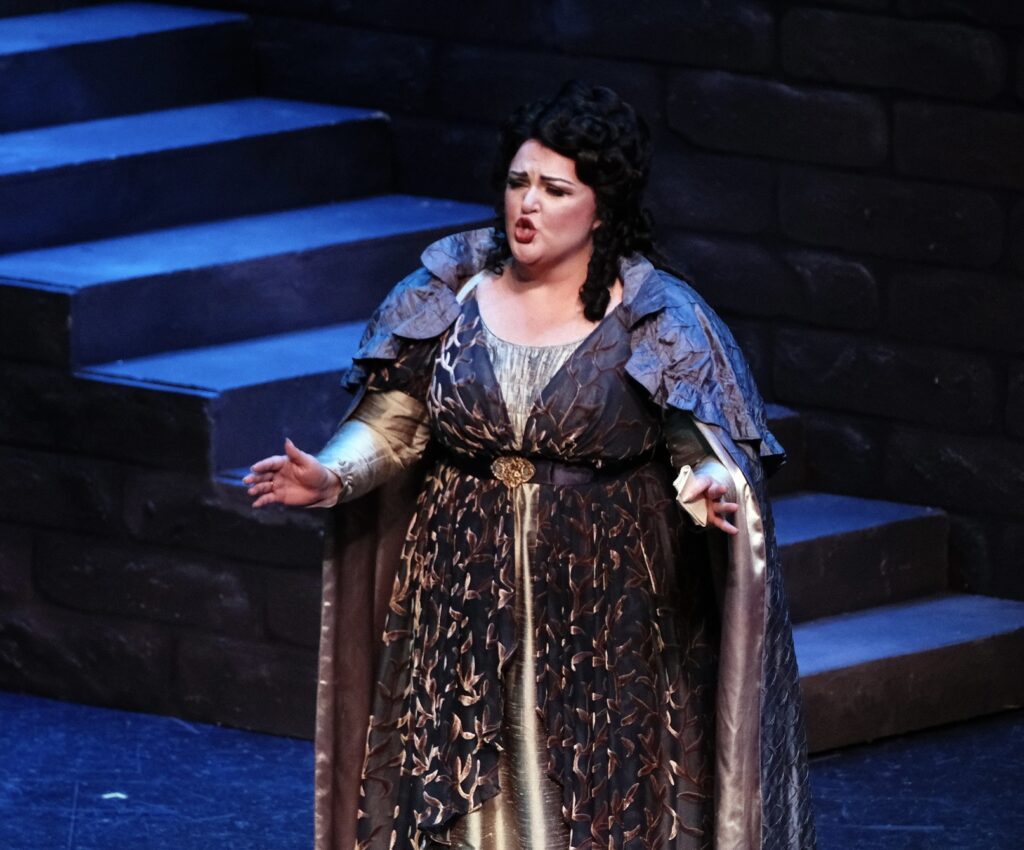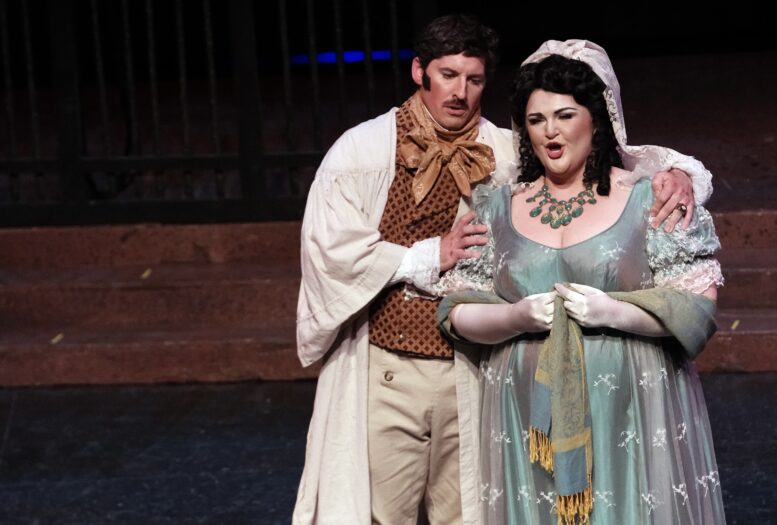By DAVID DUPONT
BG Independent News
There’s really no new way to do “Tosca.”
Puccini’s romantic classic is set on its specific time in a specific place — June 16 and 17 1800 in Rome early enough in the Napoleonic Wars that Bonaparte was still considered a liberator.
There are always new voices though to take on these iconic roles and make them their own, and the Toledo Opera’s production benefits from young singers embodying the iconic characters for the first time.

Lindsey Anderson as Tosca and Brendan Boyle as Cavaradossi make their mark. Neither is a new face in Toledo. Anderson appeared here in “The Ballad of Baby Doe” and as Julia Child in “Bon Appétit.” For his part, Boyle is a former resident artist with the Toledo Company and recently performed the role of Father in Toledo’s staging of “Ragtime.”
The Toledo Opera’s production of Giacomo Puccini’s “Tosca” is on stage tonight (Friday, Oct 18) at 7:30 p.m., and Sunday, October 20, 2024, at 2 p.m. at the Valentine Theatre, 400 North Superior, Toledo. Click for ticket information.
Stage director Jeffrey Buchman said “it’s such a pleasure to guide people through their first time in these roles.”
The performers do their homework into the characters, but there’s still a freshness as they discover them on stage.
That was evident when Boyle steps to the stage, and stands before his canvas. Cavaradossi is a painter, and he is torn. The Mary Magdalene he is painting is based on his lover Tosca, but with elements of a woman he saw fervently praying in the chapel. He sings about the two women, and how they are different, and yet how Tosca is at the core of the painting.
In counterpoint, the sacristan (Jason Budd), comically tut-tuts about discussing such things in a sacred space. Budd, who studied at BGSU, is a regular with the company.

When Tosca, upon making her grand entrance, eyes the painting, she sees what’s not her — the eyes and the hair color. The tempestuous diva is jealous and convinced that Cavaradossi is having an affair with this other woman.
He is not. The woman was in the chapel praying for her brother, Angelotti (Robbie Raso) who we saw briefly entering the chapel, red at dawn, to the ominous chords of the orchestra. He is an escaped political prisoner, and his sister has left him food and a disguise to assist his escape.
This tangle of devotion and political intrigue, drives the narrative.

Scarpia (Corey Crider), the chief of the secret police who rules the city, enters the chapel amidst the assembling choir, like storm clouds rolling over a landscape.
Scarpia not only controls the city, but the character holds center stage and drives the action until the end of Act II.
Crider’s Scarpia is ruthless, but he has his pleasures, especially women, the more unwilling the better.
He uses Tosca’s jealousy to his own ends.
He adds an edge of brutality to Puccini’s magnificent music. At the end of Act 1, Scarpia sings of his carnal desire for Tosca as the choir sings the “Te Deum.” The contrast is chilling.
Buchman said as director his role is to control the tension, making sure the singers are ratcheting it up when needed, but not pushing too much, too early.
The story is driven by the inexorable pull of tragedy — that this will not end well for anyone is evident in the darkness of those opening chords.
Still the more hopeless the situation, the more the songs rise to the occasion.
For Anderson it is the aria “Vissi d’arte” (“I lived for art”) as she prays for a way to escape being raped by Scarpia. For Boyle it is “E lucevan le stelle” (“And the stars shone”), as he reminisces about his love for Tosca as his execution nears. That aria highlights the beauty of the interaction between the Toledo Symphony Orchestra conducted by Geoffrey McDonald, and the singers. George Klaas utters the mournful clarinet melody, that then weaves itself into the vocal line.
Then reunited for one last time, the two lovers sing of the life that awaits them. Yet the words are full of images of the sky and heaven, indicating that may be where they will next meet.





